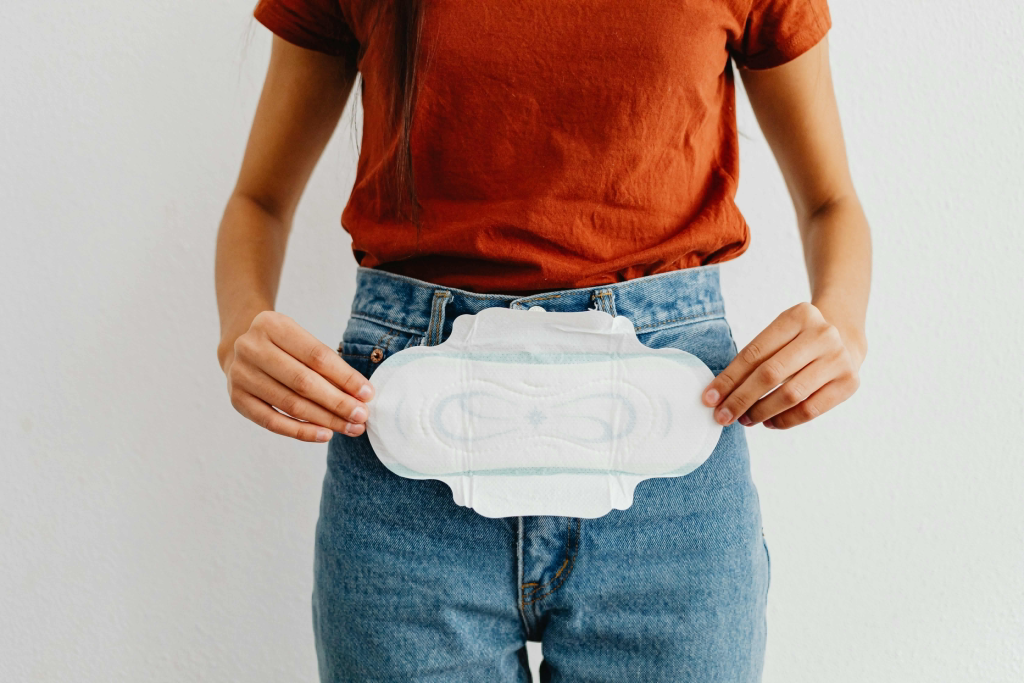Doctors draw blood from arms to check for diseases all the time, yet 1.8 billion people produce blood naturally every month, and that gets discarded as waste. Medical science has dismissed menstrual blood for decades, missing lots of essential health information. This blood contains unique proteins that match health markers found in regular blood tests. Swiss researchers have now proven this monthly source holds untapped diagnostic potential. The breakthrough opens possibilities for smart health monitoring systems embedded directly in sanitary pad designs.
Scientists Turn Sanitary Pads Into Smart Health Trackers
Scientists at ETH Zurich have developed MenstruAI, the first technology to detect disease markers directly from menstrual blood in sanitary pads. This device turns an ordinary period pad into a health monitoring system that works without any electronic components or laboratory equipment.
The research team, led by PhD candidate Lucas Dosnon, has found that the blood contains 385 unique proteins that match health markers in regular blood tests.
The work has already earned recognition for meeting the World Health Organization’s standards for accessible medical technology. The device is affordable, sensitive, user-friendly, rapid, robust, equipment-free, and deliverable to remote areas.
Read More: Scientists Finally Figure Out What’s Causing Girls to Get Periods at a Younger Age
How a Simple Pad Can Read Your Health
The smart sanitary pad works like a COVID rapid test. Instead of detecting virus proteins in saliva, it finds health markers in menstrual blood.
Users wear a regular pad that contains a small silicone chamber with a paper test strip inside. When blood contacts the strip, antibodies on the paper react with target proteins. This creates colored dots. The darker the color, the higher the health marker level.
The design controls how much blood reaches the sensor. This prevents smearing or false readings. A special membrane filters out red blood cells, so only clear plasma reaches the test area.
Users can read results with the naked eye or use a smartphone app. The app uses machine learning to spot color differences that human eyes might miss. In testing, the system was correct 9 times out of 10. Each test costs less than $1 to produce.
What Your Period Blood Can Tell You
MenstruAI currently tracks three health markers that can signal serious medical conditions. The researchers chose these proteins because they stay low in healthy people, so any increase sends a meaningful warning signal.
The first marker, CRP, rises when the body fights infection or inflammation. High levels suggest the immune system is battling something, from a minor infection to more serious inflammatory conditions. The second protein, CEA, increases when tumors are present. While healthy people typically show levels below 5 ng/mL, concentrations above 20 ng/mL can indicate cancer or tumor spread.
The third marker, CA-125, helps spot endometriosis and ovarian cancer. This protein is important because studies show 82% of ovarian cancer patients have elevated levels, and women with endometriosis often show levels exceeding 100 U/mL compared to the normal range below 35 U/mL.
The researchers say that this new health diagnosis system acts as an early warning system, not a medical diagnosis. Abnormal readings mean people should seek professional medical advice going forward. Looking ahead, the team plans to expand beyond these three markers, potentially including tests for sexually transmitted diseases.
Read More: Beyond Endo: Why Adenomyosis Should Be The Next Topic of Discussion
Why This Could Transform Women’s Health Worldwide
This technology addresses something important missing in women’s healthcare, most importantly in poverty-stricken regions. “Right from the outset, the aim was to develop a solution that can also be used in regions with poor healthcare provision,” explains Dr. Inge Herrmann, the study’s senior author.
Traditional health screenings need expensive lab equipment, trained technicians, and multiple doctor visits. MenstruAI brings health monitoring directly to people’s homes instead. No electricity, special storage conditions, or technical training is needed.

Real-world testing has proved the concept works. Volunteers wore prototype pads for four hours during the second day of their periods. They found the devices to be as comfortable as regular sanitary products and reported no difference in daily activities like walking or commuting around. Every test successfully collected blood samples without contamination issues as well. Population-wide screening programs could become possible in developing countries, where catching cancer and other diseases early often determines survival rates. Women can also track changes over time and better understand their bodies through regular monitoring. The approach also tackles menstrual stigma by treating menstrual blood as scientifically valuable rather than shameful waste.
Read More: Women Who Start Menopause Before a Certain Age More Likely to Die Young
When You’ll Be Able to Try This
Before MenstruAI reaches consumers, researchers must complete large-scale population studies with hundreds of participants. These studies need to account for the natural differences in menstrual blood flow and composition between different women and cycle days. The team must also prove the tests can accurately identify health issues while avoiding false positives that could cause unnecessary panic. Regulatory approvals for medical devices will require additional safety testing and clinical validation.

Meanwhile, the researchers are working with design experts to ensure the technology feels both technically and socially acceptable. They plan to expand the biomarker panel to detect even more conditions, possibly including sexually transmitted diseases. No official timeline exists for commercial availability, but the strong first results and low production costs suggest this technology could reach markets within the next few years.
“Courageous projects are called for to ensure that women’s health finally takes the place it deserves,” Dosnon says. This represents exactly that kind of courage. Turning what was once considered waste into a window for better health.
Read More: Endometriosis Diagnosis Transformed by Game-Changing New Guidelines
